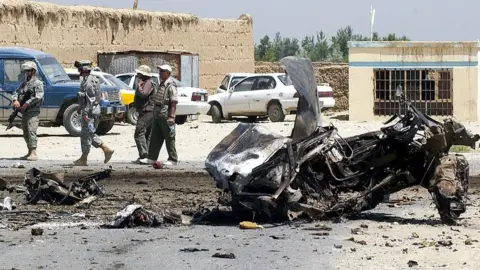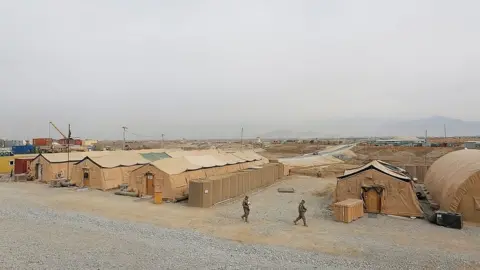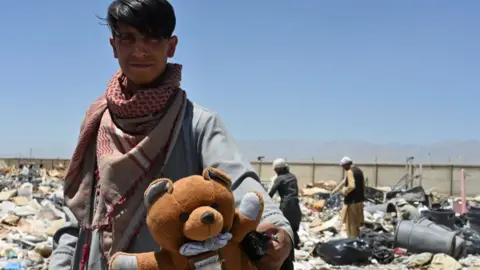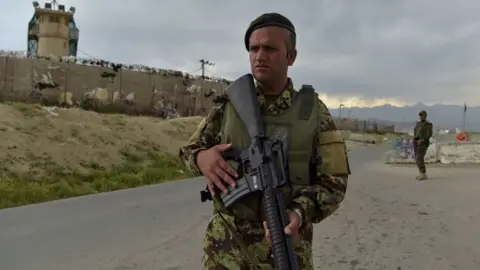Afghanistan: Two decades of the US at Bagram base
 Getty Images
Getty ImagesFor the US and Nato, the Bagram airbase in Afghanistan has been the epicentre of the war against the Taliban and al-Qaeda for some 20 years.
The US-led coalition forces moved in during December 2001, and it was developed into a huge base capable of holding up to 10,000 troops.
Now they have left as President Joe Biden vows to have all US forces gone by 11 September.
The Taliban have welcomed news of the withdrawal from the base.
The Afghan military will now take over Bagram as part of its ongoing fight against the Taliban.
 Getty Images
Getty Images Getty Images
Getty ImagesThe airfield was built by the Soviet Union in the 1950s, becoming its main base in the 1980s as it defended its occupation of Afghanistan.
The US inherited the base when it overthrew the Taliban in 2001. Bagram was in ruins after being abandoned, but the Americans rebuilt the base and it eventually grew to around 30 square miles (77 sq km).
It is served by two runways, the most recent of which is just more than two miles long, where large cargo and bomber aircraft can land.
At one point it boasted swimming pools, cinemas and spas - and even fast-food outlets such as Burger King and Pizza Hut.
 Getty Images
Getty Images AFP via Getty Images
AFP via Getty Images Getty Images
Getty ImagesBagram included a prison for people detained by US forces at the height of the conflict, which became known as Afghanistan's Guantanamo - after the infamous US military prison in Cuba.
It was one of the sites identified in a US Senate report on the CIA's interrogation of al-Qaeda suspects, including the use of torture, carried out in detention facilities.
George W Bush, Barack Obama and Donald Trump all visited the base during their tenures as president.
 AFP via Getty Images
AFP via Getty Images Getty Images
Getty Images Getty Images
Getty ImagesAbout 650 US troops are expected to remain in the country, the Associated Press reports, to provide protection for diplomats and help guard Kabul's international airport, a vital transport hub for the landlocked country.
The ability of Afghan forces to keep control of the base could be essential in maintaining security in Kabul and keeping pressure on the Taliban.
The exit of foreign forces from Bagram base "symbolises that Afghanistan is alone, abandoned, and left to defend itself against the Taliban's onslaught", Afghanistan expert Nishank Motwani told the Reuters news agency.
"Having reached home, Americans and allied forces will now watch what they fought so hard to build over 20 years burn down from afar and knowing that the Afghan men and women they fought with risk losing everything."
 AFP via Getty Images
AFP via Getty Images AFP via Getty Images
AFP via Getty Images AFP via Getty Images
AFP via Getty ImagesAll photos subject to copyright.
